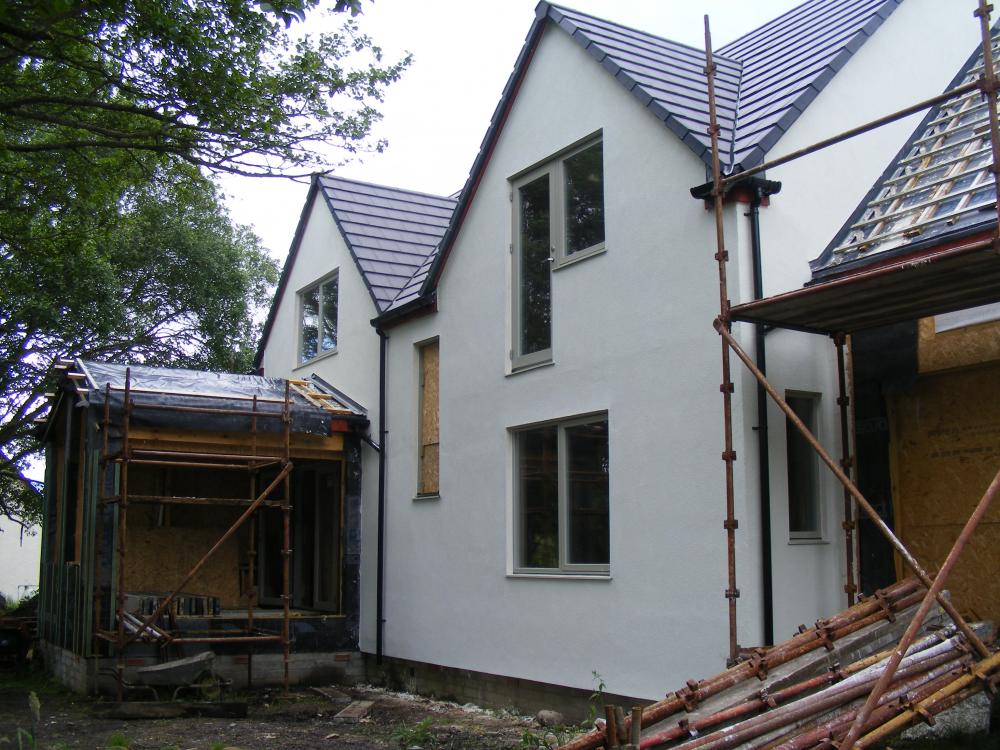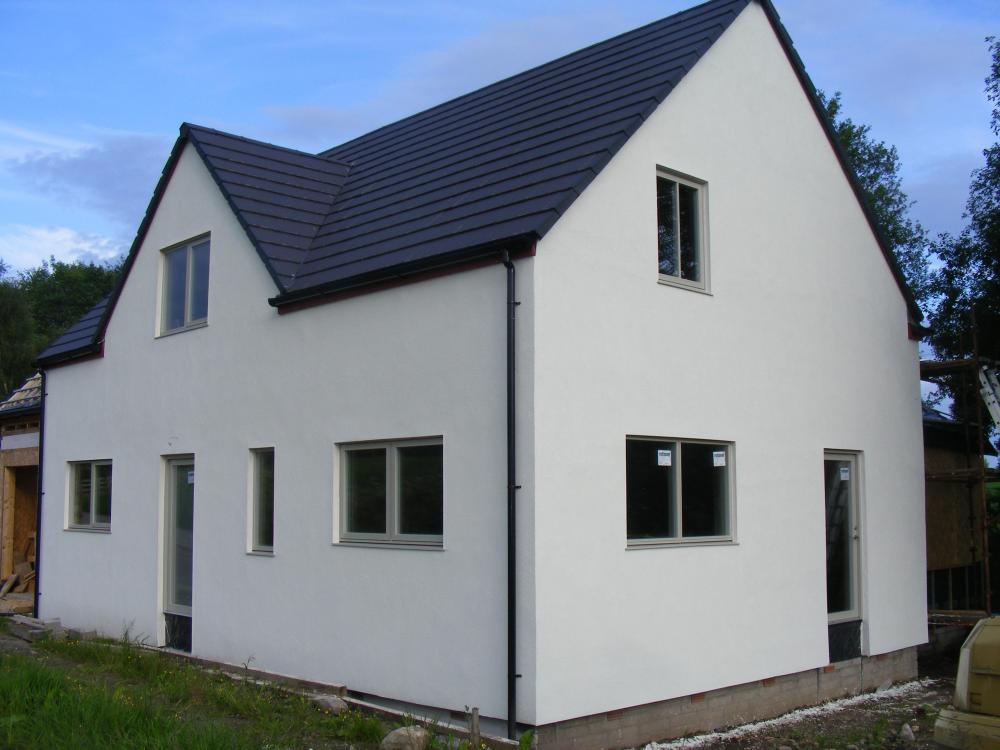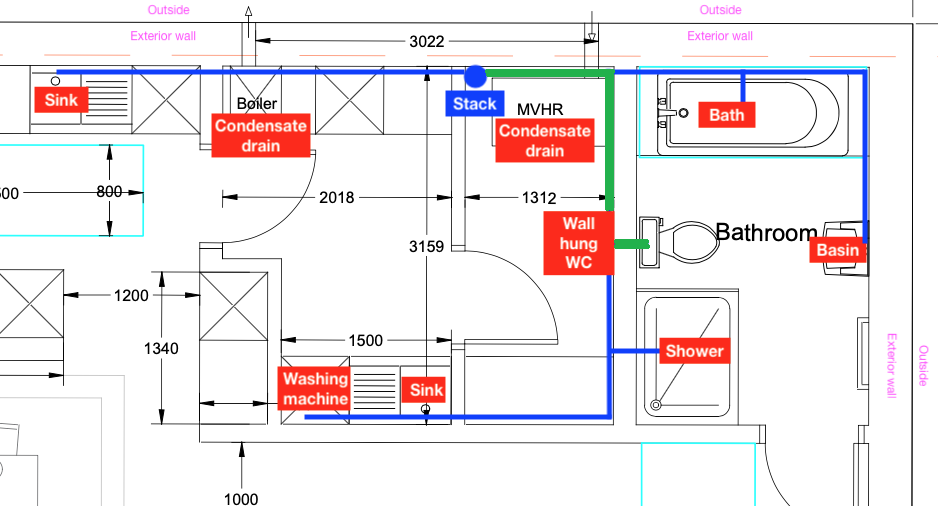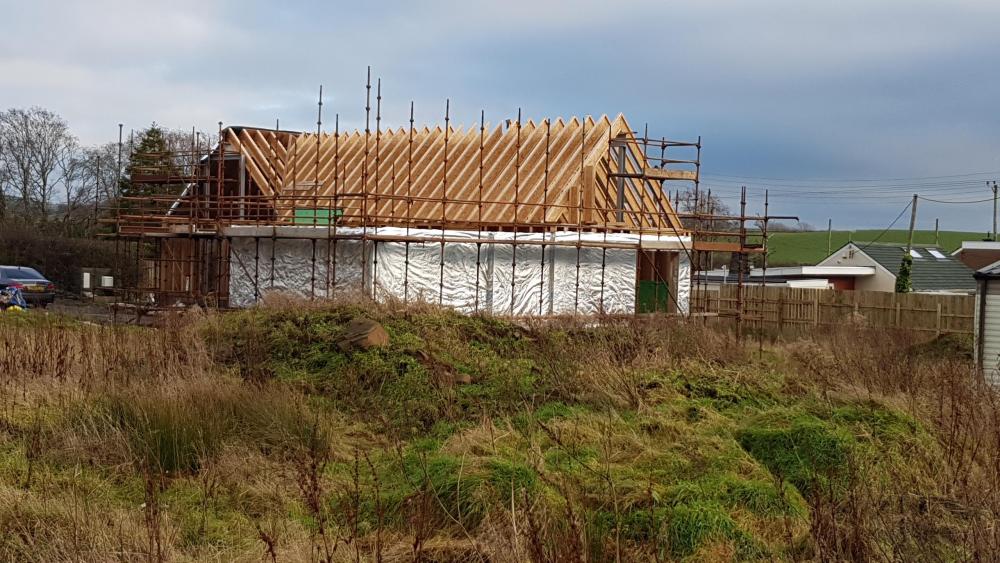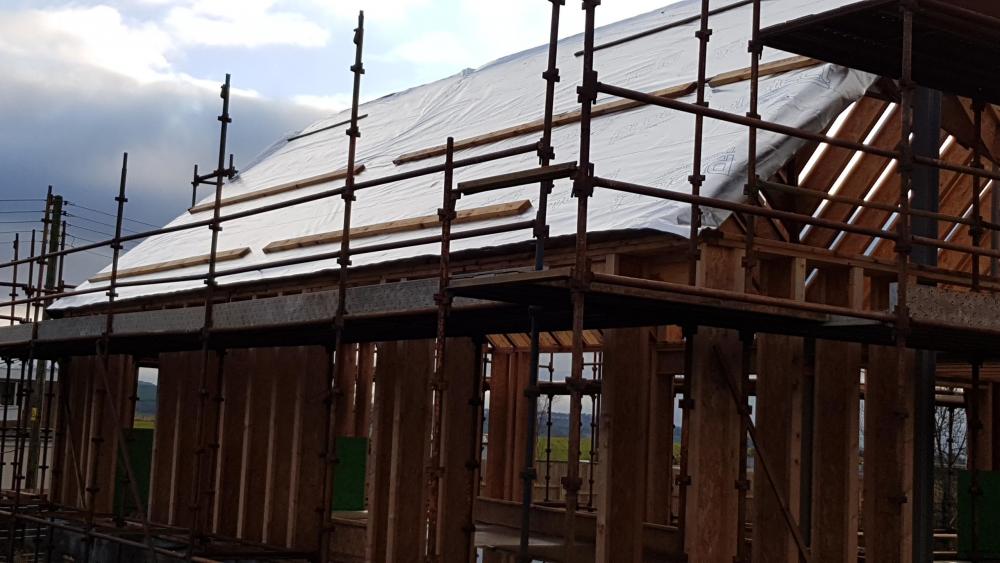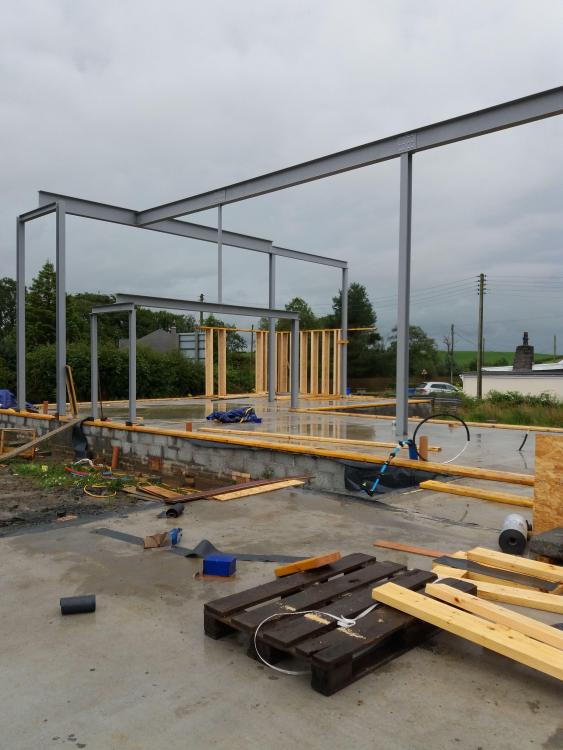Leaderboard
Popular Content
Showing content with the highest reputation on 12/22/19 in all areas
-
Hello, Another post and another year of self building. Since my last entry we have made some progress in a few areas. I previously mentioned some trouble that I had with the treatment tank. We choose a Tricel model as it is widely installed on Skye and the local merchants all suggested it. The alternative was a rotating one with moving parts which I was keen to avoid. Other models were getting costly to be delivered and would require some form of mechanical unloading at my end. After my post I had a fair bit of communication with the manufacturer and the merchant. I didn’t back down and didn’t pay, in the end they backed down and sent a replacement. This went via Inverness and the merchant wanted to inspect before delivering to Skye, guess what they found? Three tanks later and it’s now in the ground. Discharge will be to a ditch, which at this time of year is wet but for most of the year is usually dry, this runs off to a wooded area at the bottom of the croft. Our original warrant and SEPA approval was for a traditional septic tank and soakaway (amended installation was agreed with both parties). After some posts on BH it was clear that a treatment tank would be the better option all around. I should say that a traditional septic tank and soakway is still quite popular in the Hebrides, two recent self builds both installed this set-up. Whilst the digger was here, we decided to get some further work done. A gravel drain was put around the back and is working well. Rotten rock which was at the front of the house was used to bring up the level around the house. A big pile of clay and top soil (or mud mountain as some called it ?) from works back in 2015 was then landscaped around the site. We are pleased with how the house sits in its surroundings. Finally, here is one from the Broch. People have been self building here since the Iron Age! Although this one is down to foundation level with the rock reused multiple times in various self builds during the last two thousand years. We now need to put the fence back up around the site to allow our sheep to come back on the croft. Today’s job has been digging and fitting four posts. The electricity connection was moved from the temporary supply box into the house. The cost for this work was cheap at around £200 and done by two very tidy and polite SSE workers. This simple homemade box was constructed from scraps and has lasted four long Hebridean winters but will now be recycled for another purpose. Talking of recycling, I don’t have a skip on site and everything apart from dust is stored and will be used for another job. Internally all our efforts have been on the upstairs of the house. Upstairs is an easy win to get completed as it’s just our two children’s bedrooms and an upstairs living area. A bit of time has been spent with our MDF skirtings, architraves and cills. We used real wood in our last build project and it has moved slightly over the years, MDF won’t do this and is cheap, but requires work in sanding and painting. Carpets are due to be fitted at the start of January and once these are down it will just be electrical sockets, lights etc to finish the rooms. Internal decorating can then commence downstairs. That’s about it, the kitchen has been fitted and downstairs flooring is done but both are covered by copious amounts of cardboard and I’ll upload some photos once this is removed. Thanks for reading. This will be the last post for 2019, hope everybody has a great Christmas and best wishes for your projects in the New Year!3 points
-
Hi @Trippy21 We put in full planning for a house with dormers and were then able to achieve a Non Material Variation to change to velux windows. Our build is in national scenic area and houses are never the full two storey here. There is a bit of work in dormers, they are almost like a mini house in your roof. We put double ones in our loft conversion and the space you gain is quite limited for the amount of work involved. We liked our top hung veluxs as you can stand out of them. Here is a couple of photos one of the external and internal of the house.3 points
-
2 points
-
2 points
-
I agree with that ,but if there is an accident and it goes to court ,then employer laways gets unrealistically penalised REAL EXAMPLE a mechanic hits himself on hand with his own hammer and crushes it-off work for months,should have been a few weeks --but strecthed it out to close to a year --mechanic goes to tribunal to obtain a lump sum judgement 75% employers fault --employee 25% the employer should have made sure the emplyee did not use a hammer with grease on shaft the man had 20 years in the trade .so to my mind if any blame it should have other way round ,but really maybe the mech should not have been on the piss all weekend -this was not a large garage that was being sued ,but a very small one- result this insurance ran away ,due the verdict of tribunal--so he had to find £15K + £5 k court expenses--nearlty put him out of biz-- that was an unreasonable placement of blame for the accident -,2 points
-
1 point
-
We had quite a few receipts like that and we just made a record for ourselves what they where for None of them where flagged when we submitted We were paid out to the penny what we had claimed You will find that some of the smaller suppliers will just Wright goods on We would normal write on the back Silicon X 12 or similar All the bits of vat soon add up1 point
-
1 point
-
Making a test rig to help find leaks is pretty easy - quite a few people have done it including a few on this forum. Car fan, bit of MDF and some sticky back plastic. Some pressure measurements to compare before and after leakage is a bit harder but quite doable. Getting actual flow rate measurements to a sufficient level of calibration to be confidently comparable between houses or against standards (building regs or Passivhaus) is a bit trickier I think.1 point
-
I don't think there's that much wrong with it. I would probably do something similar with a 110mm AAV in the loft on top of the stack and a 50mm AAV where the washing machine is. I did go a bit OTT here fitting several AAVs to build in a bit of redundancy is case of failure. The green is 110mm and blue 50mm pipe.1 point
-
have to say, if i were doing this, i'd run them sheathed in a larger pipe to avoid condensation risk, soggy paper and all...1 point
-
Probably around £250. I think that is what the guy that did @joe90 said he charged. Or make your own test rig.1 point
-
1 point
-
Oh, by stack I meant a penetration through the concrete-raft (slab) foundation (i.e. the floor) by soil pipe which connects to an underground foul waste-water drain. I didn't mean an SVP (soil vent pipe). Did I use the wrong term? (Its a modern bungalow so only a single floor.)1 point
-
Ours is a 45 degree roof, almost the standard build up here. I have to say there is a lot to recommend about a 45 degree roof, not least the ease of marking out stuff to cut.1 point
-
Up here 1.5 storey IS a dormer bungalow. Are you thinking of what we call a 1 3/4 storey, where the walls extend up to at least window sill level upstairs meaning you get full standing room1 point
-
I'm struggling to remember. I think we actually figured it out for ourselves as we were looking to replace or extend over it and researched the permitted development rules on it. We never got around to changing it at all; sold on that house last year and again no question was raised about the heating system in the conservatory. The buyer didn't seem to have a survey done at all (she was downsizing and in a massive rush to complete before the first Brexit deadline), the buyer's solicitor did ask about the age of the conservatory we said it predated us, at least 20 years, which I think was enough for them to figure it's compliance to BRs was very low risk. By coincidence my wife now works for the conveyancer that handled that sale for us and thinks they'd pick this sort of thing up when representing the buyer, if the conservatory/alteration is "recent". They'd ask for the seller to confirm it was done under permitted development, request any certificate for the same, and/or arrange indemnity insurance if any issues come up.1 point
-
you obviously haven,t tried to do many deals with asians , they will always want a deal ,then another one at end of job. one of the reasons i moved out of manchester you spend 30mins aruing about price of a set of tyres or something ,then when they come back they insist that was not the price,even when they had a printed quote ,which they somehow loose ,or "me no speaky de english" the one thing they all seemed understand was "jack the fxxer up fred and renove the tryes"-then all of a sudden they understand and pay up -1 point
-
In general, resin printers give a finer surface finish (layer height is ~25µ to 100µ) but only have a small print volume, or more specifically a small print base area (mine's limited to 115mm x 65mm for the base and up to 155mm high). FDM printers can generally print bigger things, but the layer height is usually around 50µ to 300µ, plus, in practice, the diameter of the nozzle has an effect on surface finish, as the smallest is often around 400µ. There have been a few times when I've wanted a bigger print volume, though, as having to print multiple smaller parts and then bond them together is a bit of a pain. I could also do without the smell of the resin. It's unpleasant enough that my printer lives out in the workshop, as it's both too smelly and too messy when washing prints to remove excess resin after printing, cleaning up the printer with IPA etc. I also have to wear gloves when using it, as the uncured resin isn't good for your skin.1 point
-
1. Drain Tap - It is so you can drain it down in cold weather. 2. 63 is fine although 110mm is better if they really want it insulated 3. 25x19 Polyethylene will do - Climaflex or Nomafoam 4. Post about a metre high and use stand offs to hold the pipe. Can always wrap the whole lot in a couple of cheap yoga / camping mats.1 point
-
1 point
-
On commercial buildings the drawings for framing are always 2000x2000 On the private houses I normally build 2000 deep x 1800 minimum I’ve only experience of building in England I would have thought a wheel chair loo and door opening wouldn’t vary much1 point
-
1 point
-
how big are they ..? You’ll need to know the full height which could be another 10-12” on what is visible. All the big merchants will carry standard pots, they start at about £35-40 each. If you want something more ornate then a chat with WT Knowles wouldn’t go amiss .. Other option is a reclaim yard or eBay - loads on there like this1 point
-
Interesting thread and discussion. My system gets delivered today for similar size bungalow. Be interesting to see how I get on. 1700 excl designed and supplied1 point
-
1 point
-
1 point
-
0 points
This leaderboard is set to London/GMT+01:00


.thumb.jpg.bac90f3bbf6868cf2118d010d936c99d.jpg)


